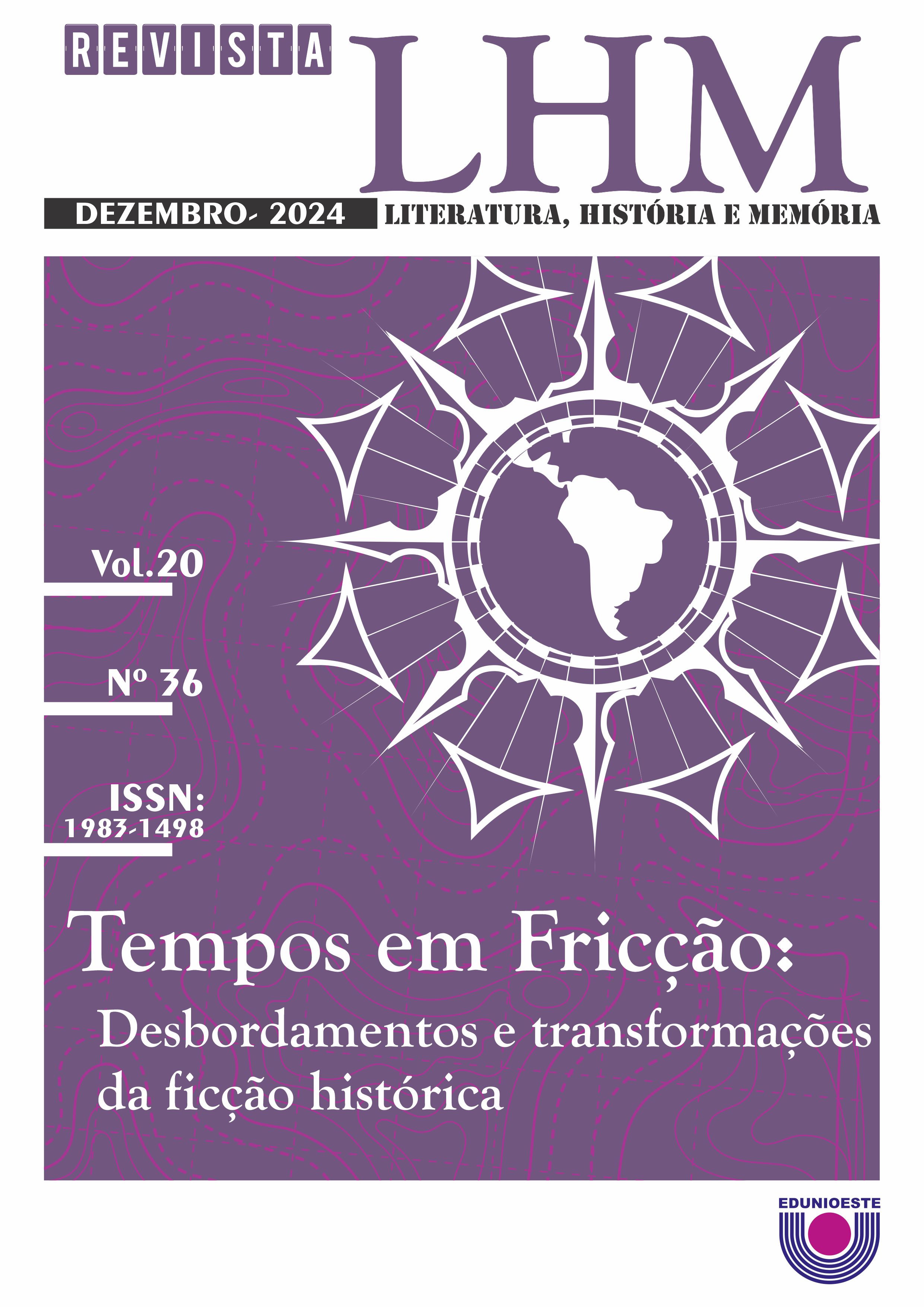Uma memória que pesa
trajetórias do comum e a história da ditadura brasileira na HQ Chumbo
DOI:
https://doi.org/10.48075/rlhm.v20i36.33709Resumo
O artigo objetiva apresentar como a história brasileira do século XX é trabalhada na história em quadrinhos Chumbo entrelaçando no cotidiano ficcional de uma família a rotina e os fatos históricos que culminaram no Golpe de 1964, e seu eco na renovação do conservadorismo protofascista das primeiras décadas do século XXI. Publicada na França em 2023 e no Brasil em 2024, a obra cobre 60 anos da história brasileira, centrando-se em um relato ficcional de uma família, livremente inspirada pela família do autor franco-brasileiro Matthias Lehmann. Unindo pesquisa histórica e imagética, a HQ colabora para compreensão das transformações políticas, culturais, arquitetônicas e sociais do país durante as ditaduras de Vargas e do Estado Novo, tendo Belo Horizonte como epicentro do movimento reacionário no cenário brasileiro. Com a plasticidade inerente da linguagem, o livro permite uma leitura complexa e estética do desenvolvimento cultural de cada década a partir das referências do design, arquitetura e urbanismo, da propaganda e da difusão nas mídias de cada época retratada. Acompanhando a intimidade de cada integrante da família Wallace e Rebendoleng, temos um panorama do jogo político que embasou o avanço conservador e a resistência libertária em suas nuances e contradições, e que tensionam o delicado fio que conecta a necessidade de lembrar, e o desejo de esquecer.
Palavras-chave: História em Quadrinhos. Ficção Histórica. Cultura Visual. História do Brasil. Ditadura Militar.
Downloads
Publicado
Como Citar
Edição
Seção
Licença

Este trabalho está licenciado sob uma licença Creative Commons Attribution-NonCommercial-ShareAlike 4.0 International License.
Aviso de Direito Autoral Creative Commons
Política para Periódicos de Acesso Livre
Autores que publicam nesta revista concordam com os seguintes termos:
1. Autores mantém os direitos autorais e concedem à revista o direito de primeira publicação, com o trabalho simultaneamente licenciado sob a Licença Creative Commons Attribution que permite o compartilhamento do trabalho com reconhecimento da autoria e publicação inicial nesta revista.2. Autores têm autorização para assumir contratos adicionais separadamente, para distribuição não-exclusiva da versão do trabalho publicada nesta revista (ex.: publicar em repositório institucional ou como capítulo de livro), com reconhecimento de autoria e publicação inicial nesta revista.
3. Autores têm permissão e são estimulados a publicar e distribuir seu trabalho online (ex.: em repositórios institucionais ou na sua página pessoal) a qualquer ponto antes ou durante o processo editorial, já que isso pode gerar alterações produtivas, bem como aumentar o impacto e a citação do trabalho publicado (Veja O Efeito do Acesso Livre).
Licença Creative Commons
Esta obra está licenciada com uma Licença Creative Commons Atribuição-NãoComercial-CompartilhaIgual 4.0 Internacional, o que permite compartilhar, copiar, distribuir, exibir, reproduzir, a totalidade ou partes desde que não tenha objetivo comercial e sejam citados os autores e a fonte.


